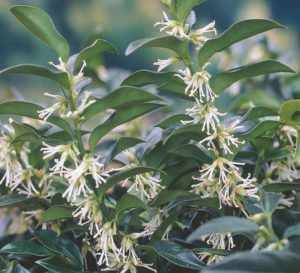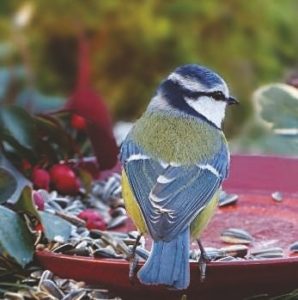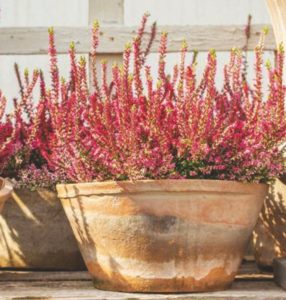Garden Notes
Winter doesn’t have to be white in the garden, even if there is a blanket of snow covering the soil. Most of the colour comes from berries: hollies, firethorn, and other winter-fruiting plants that add unexpected splashes of reds and oranges to your winter garden.
Boxing Clever
It’s during winter that evergreens really come into their own. But sarcococca, more popularly known as Christmas box, has more to offer than just neat glossy leaves. From late December onwards sarcococcas produce masses of creamy-white flowers. They might not be spectacular to look at, but they emit an intense honeyed perfume. Unlike true box (buxus), sarcococcas are immune to box blight and thrive in shade.
Pared-back beauty
The National Trust’s Sissinghurst Castle Garden is open during winter, allowing visitors to enjoy the architectural structure and pared-back beauty of this celebrated garden. It is in winter that the brilliance of Harold Nicolson’s design comes to the fore.
Head Gardener Michelle Cain said: “We’d love to change the perception that gardens are only interesting in summer.”
In winter, the clever use of hedges, used to define the now-famous series of garden rooms, is particularly obvious. And with the abundant fl owers and foliage of the high season pared back, the long vistas take centre stage.
Winter wonders
At this time of year birds become bolder, venturing into gardens in search of scraps and well-stocked bird tables. Keep feeders full of calorie-rich food such as peanuts, sunflower hearts and suet products. Put seed mix, chopped apples and grated cheese on ground-feeding stations for robins, thrushes and blackbirds and leave the seedheads on herbaceous plants such as fennel, Verbena and echinacea for birds such as sparrows and goldfinches. Finally, don’t forget January marks a really important event for the UK’s garden birds at is the RSPB’s Big Garden Birdwatch.
Trees for Winter Gardens
Fruit trees are good because they don’t grow too big. Choose trees with spring blossom and autumn colour, or ones that hang onto fruits and berries for a long time. Crab apples are perfect and are great even in small gardens. Malus ‘Gorgeous’ looks particularly lovely with its masses of white flowers in spring and long-lasting colourful fruits that resemble the most perfect miniature apples, and hold well into November. They’re also ideal for making a tangy, pink jelly.
Container Colour
As the days close in and the first frosts arrive, bedding plants will need removing and replacing if the garden is to offer much winter colour. Here are some of our favourite container plants to brighten up your winter pots.
- Winter flowering heathers
- Violas
- Winter-flowering pansies
- Cyclamen
- Ornamental cabbages
- Skimmia japonica
- Cornus (dogwood)
What to do now
- Dead-head autumn-fl owering plants and prune summer-flowering shrubs.
- Avoid walking on your lawn or you will damage it fairly easily.
- Add cloches to winter salads to protect from the weather and pests, and wrap pots of half-hardy plants in bubble wrap or fleece.
- Put feeders out. Birds will appreciate nuts, seeds and fat balls. Remember to freshen up water regularly and ensure it doesn’t freeze.
- There’s still time to get bulbs in the ground in November to guarantee winter colour from January onwards.
- Tidy and clean your garden tools.
- Winter prune apple trees.
- Divide snowdrops.
Timely Trim
With its prolific sprays of fragrant flowers, wisteria is one of the highlights of late spring. Despite its delicate appearance it is an extremely vigorous plant. If you don’t prune it back now, whilst it’s dormant it will soon run amok. So sharpen your secateurs and set to work. Aim to create a simple, open framework that lets light through to the flowering spurs that will produce next spring’s flowers.
Posted in: Gardens





